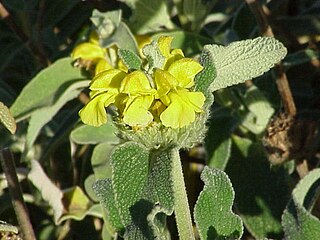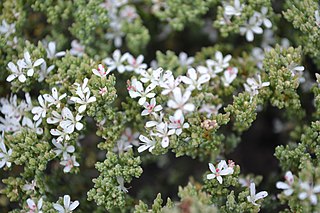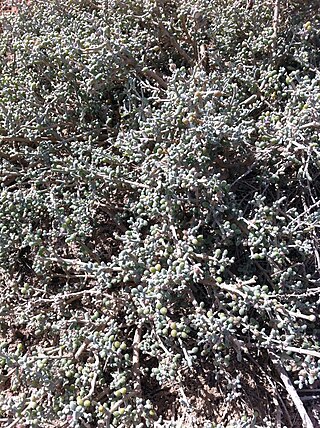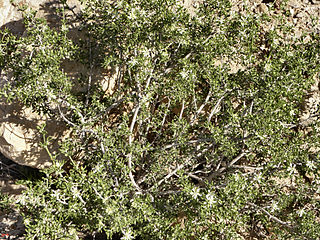| Fagonia | |
|---|---|
 | |
| Fagonia arabica | |
| Scientific classification | |
| Kingdom: | Plantae |
| Clade: | Tracheophytes |
| Clade: | Angiosperms |
| Clade: | Eudicots |
| Clade: | Rosids |
| Order: | Zygophyllales |
| Family: | Zygophyllaceae |
| Subfamily: | Zygophylloideae |
| Genus: | Fagonia L. [1] [2] |
| Species | |
See text | |
Fagonia is a genus of wild, flowering plants in the caltrop family, Zygophyllaceae, having about 34 species. The latest reorganization of the genus took place in 2018 when systematists Christenhusz & Byng, Royal Botanical Gardens, Kew (UK) included Fagonia spp.. along with several other Zygophyllum genera, into a new genus named "Zygophyllum L." Species occurring in the US are commonly referred to as fagonbushes. The distribution of the genus includes parts of Africa, the Mediterranean Basin, the Mid-East, India, and parts of North & South America. Fagonia species have been used ethnobotanically by traditional practitioners under Ayurvedic and other TM healing regimes for many maladies. Species occur in deserts, dry washes, ditches and on rocky outcrops, including at altitude.
Contents
Fagonia laevis is a perennial herb of the United States desert southwest. It has opposite leaves, trifoliate with spinescent stipules, a lavender corolla and smooth fruits. Under cultivation, F. indica has been found to have a long taproot and to its growth slowing where temperatures dipped below 65 F.
Commercial Fagonia products available on the web should be viewed with caution by reason of there being little to no authentication as to species contained therein, based on DNA analysis. It may be that all Fagonia species contain similar medicinal compounds but that has yet to be established as of 2015 [update] . Research carried out at Quaid-i-Azam U. in Pakistan found that three Pakistani Fagonia species, both the verified (per B.-A. Beier's 2005 reorganization of the genus) and unverified ones, [3] were represented in commercial Fagonia (Dramas) products in the Islamabad marketplace. Plant systematists[ who? ] caution that species other than Fagonia, as well as other, unrelated material, can be present in commercial preparations.
Numerous scientific papers cite Fagonia cretica as the species studied. However, due to the re-ordering of Fagonia species by Beier in 2005, researchers have found that they have actually been studying another Fagonia species, instead, most commonly, Fagonia indica. [3]
In 2022, researchers at the Linus Pauling Institute, Oregon State U., determined that an acid-hydrolyzed extract of F. indica was much more effective than an aqueous extract at causing MCF-7 breast cancer cell death and inhibiting further cell multiplication.
















